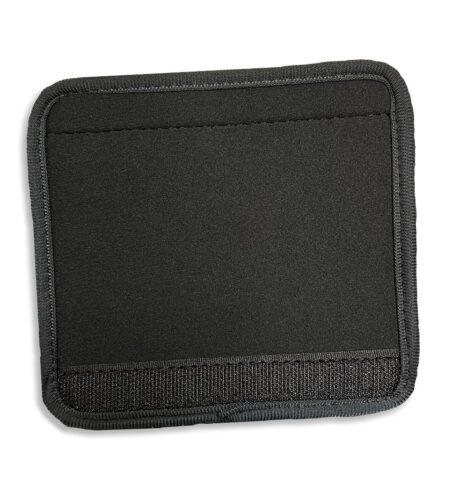If you have been known to have seizures while playing video games, you aren’t alone. People who have seizures while playing video games have photosensitive epilepsy. Seizures are triggered by visual stimuli that forms patterns in time or space. Visual stimuli that triggers seizures could be flashing lights, regular moving patterns or bold, regular patterns.
What are the signs and symptoms of photosensitive epilepsy?
There are dozens of signs and symptoms of photosensitivity epilepsy. The most common symptom is experiencing seizures when you’re exposed to visual stimuli. The visual stimuli that can trigger a seizure varies from one patient to another. The nature and severity of the seizures also varies from one patient to another. Some patients may experience brief absence seizures while other patients may experience full tonic-clonic seizures. Many patients who have photosensitive epilepsy experience an aura or feel odd sensations before a seizure occurs. An aura or odd sensations should be a warning to move away from the visual stimuli triggering the attack.
People who have photosensitive epilepsy usually experience tonic-clonic seizures. A tonic-clonic seizure shouldn’t last more than five minutes. Symptoms usually include loss of consciousness, the patient falls to the ground, muscles contract, body stiffens, patient may cry out, breathing pattern changes, loss of bladder control, patient bites tongue and inside of cheeks and their limbs will jerk or twitch as their muscles tighten and relax.
After the seizure ends, the patient will regain consciousness while their muscles slowly start to relax. After the seizure, a person may experience tiredness, memory loss for a short time, headache, soreness and confusion.
Some people may not have seizures. Some people only experience headache, nausea, dizziness and other symptoms. If they don’t have seizures, they don’t have photosensitive epilepsy.
What should I do to help someone having a seizure?
Never attempt to stop a seizure because you won’t be able to stop it. If you see someone having a seizure, be sure to roll the person on their side to prevent choking, cushion their head, loosen any tight clothing around their neck, keep their airway open by gripping their jaw gently and tilting their head back if necessary and remove any objects they may have hit during the seizure.
Be sure to never put something in a person’s mouth while they’re having a seizure. Doing so could cause them to choke. It’s important that you don’t restrict their movement while they’re having a seizure unless they’re in danger. Be sure to stay with the person until the seizure has stopped or emergency responders have arrived.
Should I call 911?
In some cases, you may need to call 911. You should call 911 if the person is pregnant or has diabetes, the seizure occurs in water, the seizure lasts longer than five minutes or an injury occurs from them having a seizure. You should also call 911 if the person doesn’t regain consciousness after the seizure ends, another seizure starts before they regain consciousness or if they stop breathing.
What are the triggers?
There are many triggers that can cause a seizure to start. Some triggers include:
- Certain video games or television broadcasts containing rapid flashes or alternating patterns of different colors.
- Certain visual patterns, especially stripes of contrasting colors.
- Natural light, such as sunlight, that shimmers off of the water, flickering through trees or through blinds.
- Flashing lights
- Certain colors
It’s important to understand that not all video games and television broadcasts cause seizures. There are many factors that must combine to trigger an attack. Examples include:
- Brightness
- Frequency of the flash
- Wavelength of the light
- Distance between the viewer and the light source
- Contrast with background lighting
- Whether a person’s eyes are open or closed
The frequency of a flash is the most common trigger for seizures. Flashing lights that have a frequency of flashing five to 30 flashes per second are likely to trigger seizures.
Do seizures happen only once?
Unfortunately, people who have photosensitive epilepsy experience recurrent seizures. To have photosensitive epilepsy, you must have had more than two seizures to get diagnosed with the disorder.
What causes photosensitive epilepsy?
Photosensitive epilepsy is a brain disorder. A seizure is caused by abnormal electrical activity in your brain. Epilepsy may be the result of irregularity in the wiring of the brain, imbalance of neurotransmitters or a combination of both.
Genetics may be one of the causes that caused you to have photosensitive epilepsy. Children and adolescents are more likely to have the disorder. Girls are more likely to have the disorder compared to boys. If a boy has the condition, a boy tends to have more seizures compared to a girl.
What increases the risk of having a seizure?
People who are tired, intoxicated and people who play video games for an extended period of time without taking a break are more likely to experience seizures.
Is there a cure for photosensitive epilepsy?
Unfortunately, there isn’t a cure for photosensitive epilepsy.
Is there treatment for photosensitive epilepsy?
Even though there isn’t a cure for this horrible brain disorder, medication may help. Anti-epileptic medication may reduce the frequency of seizures.
People who have the disorder should avoid stimuli that can trigger a seizure. If you’re unable to avoid stimuli that can trigger a seizure, you should cover one of your eyes, and turn your head away from the visual stimuli.
Are there any tips to help people living with photosensitive epilepsy?
If you or someone you know suffers from this brain disorder, it’s important that they reduce their exposure to seizure triggers. It’s important that people with this disorder follow a healthy lifestyle. A healthy lifestyle includes getting plenty of rest, limiting stress, avoiding excess alcohol and avoiding playing video games for long periods of time or when you’re tired.
People with this disorder will need to avoid known sources of flashing lights. Places that need to be avoided are nightclubs, concerts and firework shows.
Always watch television and play video games in a room that has good lighting. Be sure to keep a safe distance from the screen. It’s recommended that you stay eight feet away from the television and two feet away from computer monitors. It’s important to use flicker-free monitors. Flicker-free monitors are flat screens and LCD. Always use a remote control instead of walking up to the television to change the channel or volume. You’ll need to reduce brightness on screen monitors, adjust internet settings to control moving images and limit the time you spend watching television and using computers and phones.
Always be sure to wear polarized sunglasses when you go outside to protect your eyes from the bright light.
It’s important to be prepared at all times. You need to know what triggers your seizures and the steps you can take to avoid them. Warning signs of a possible seizure include dizziness, muscle twitching and blurred vision. If you experience any of these symptoms, be sure to cover one of your eyes, and turn your head away from the visual stimuli.
How is photosensitive epilepsy diagnosed?
Photosensitive epilepsy is diagnosed using an electroencephalogram, also known as an EEG. If you’re having issues with flashing lights, be sure to schedule an appointment with your doctor immediately. When you have an EEG, sensors will be attached to your scalp to monitor the electrical activity in your brain in various conditions, including light stimulation generated by a strobe positioned in front of your eyes. Photosensitive epilepsy is diagnosed when there is an abnormal response to various frequencies of flashing lights.
Is photosensitive epilepsy a condition?
Photosensitive epilepsy is a brain disorder.
Is photosensitive epilepsy dangerous?
Photosensitive epilepsy isn’t necessarily dangerous. The only concern is when people have seizures they lose consciousness and usually fall unless they aren’t standing. Losing consciousness can be dangerous if the patient suffers a brain injury resulting from the fall. Even if the patient only slightly hit their head, it’s best that they be seen by a doctor. Blood or clear fluid draining from the ears or nose is a good indicator that a brain injury is present. If a person suffers a severe head injury, be sure to call 911 immediately. Don’t move the person unless you need to move them to prevent further injury.
Final Words
Approximately 87 people are diagnosed with epilepsy each day. Approximately one in every 100 people experience epilepsy. There are approximately 60 million people around the world that have epilepsy. Most people who have epilepsy don’t experience photosensitive epilepsy. Only five percent of people who have epilepsy will experience photosensitive epilepsy. Most people who have epilepsy don’t have seizures triggered by flashing lights.
Epilepsy can start at any age, but epilepsy is usually diagnosed in people under 20-years-old and people over 65-years-old. It’s always possible for a person to suddenly stop having seizures. When this happens, it’s called spontaneous remission.
Even though photosensitive epilepsy can’t be cured, there are many medications that can help with the disorder. Be sure to continue trying medications until you find the perfect one for you. You don’t have to suffer. There’s help out there waiting for you.
Again, photosensitive epilepsy isn’t necessarily dangerous, but if you think you or someone you love is suffering from it, please contact your doctor. If you need extra help, check our Resource Page for Seizure Sufferers or drop us an email on [email protected]


 Guardian Soft Special Needs Helmet
Guardian Soft Special Needs Helmet Locking Chin Strap For Guardian Helmets
Locking Chin Strap For Guardian Helmets

